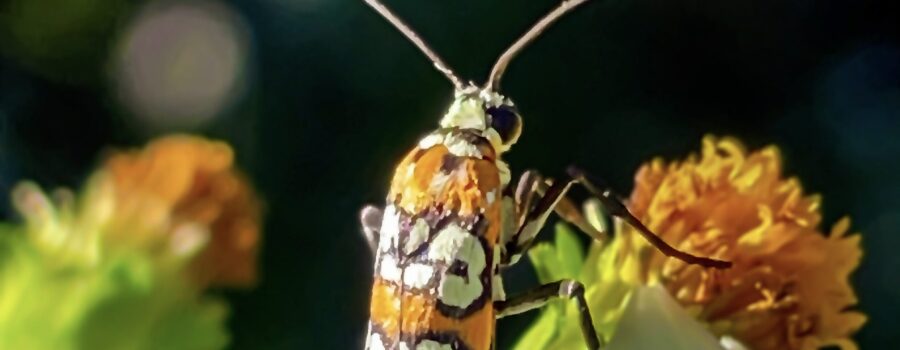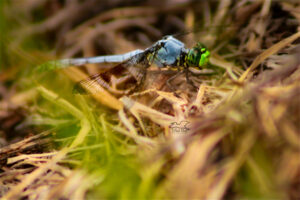The Colorful Ailanthus Webworm Moth is a Great Pollinator

The blackjack flowers that grow in my yard each year are excellent attractors for local pollinators. That’s the main reason that I let them grow. They produce a pretty white ray flower with bright yellow florets in the center, but by the time they flower they are definitely looking very weedy, so a lot of folks cut them down. Every year I find lots of butterflies, beetles, bees, flies, and moths in the blackjacks, so even though they aren’t the prettiest plants, I leave them alone. Every year I also find several new pollinators in the blackjacks. One of the new ones that I found this year was the colorful Ailanthus webworm moth (Atteva aurea).
These pretty, little moths are a tropical species that is native to Florida (especially south Florida) and much of Central America south through Costa Rica. It’s larvae spin a loose web that incorporates leaves and stems of their host plants, the paradise trees from the genus Simarouba. The larvae then feed on the leaves and bark of the trees within the relative safety of the web. When the Tree of Heaven (Ailanthus altissima) was introduced into North America from China as an ornamental, these larvae developed a taste for it as well. These moths are now found in a much extended range that includes the eastern United States as far west as Texas and Minnesota and even southern Ontario and Quebec. Occasionally these webworms can also be found on other types of plants, especially sumacs and avocado trees.
Even though the larvae are particular about their host plant, the nectar eating adults will visit a great many types of flowers, which makes them very good pollinators. The time it takes for a larval moth to become an adult is about four weeks, so there are usually multiple generations each year. Adults will usually breed in the morning and females will lay their eggs on the larval webs during the evening. This results in multiple generations existing at once in the summer in the webs. In the tropics these moths breed year round, but in the subtropics and further north all stages die when the first frost comes. When spring comes, new adults will again move slowly northward.
I have not seen any of the communal webs on plants in my yard and the only one of the host plants that I have around are sumacs. This was also a moth that I had not seen before, so I’m not sure if it was just in the area because of the abundance of flowers or if they are going to be moving into the region permanently. Since we lack the primary host plant around here I doubt that the population will get very large if they do colonize the area. Since the adults are attractive and good pollinators, they are welcome on my land.






Recent Comments